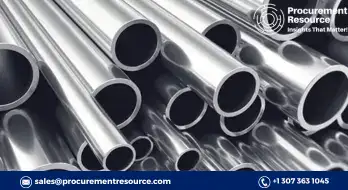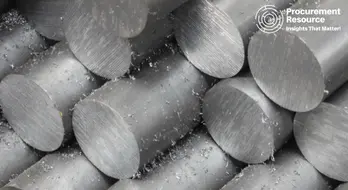Aluminium prices have been witnessing an increasing trend lately amid rising alumina prices
.webp)
Aluminium prices have seen a significant increase, driven primarily by record-high alumina prices, which have doubled this year due to supply chain disruptions across regions like Australia and Jamaica. These disruptions, coupled with a consistent rise in demand, notably from China's record aluminium production, have tightened the alumina market. The cost of alumina now accounts for more than half of the cost of producing aluminium, a sharp increase from the typical range of 30-35%. This shift is squeezing profitability for aluminium smelters.
The market constraints are anticipated to continue into early 2025. However, there is potential relief on the horizon as new production capacities in Indonesia and China are expected to come online later in the year. Despite these challenges, the strong dollar's impact on aluminium prices post-Trump's election win has been somewhat mitigated by these supply worries.
On the production front, Rusal, the largest aluminium producer outside of China, announced a significant reduction in its output by up to 500,000 tonnes, attributing this decision to the soaring alumina costs. This move includes a 250,000-tonne cut in the initial phase of its production optimization program, equating to about a 6% reduction in its total production. Despite having its own alumina sources, Rusal still purchases over a third of its raw materials from the open market, influencing its cost structures and operational decisions.
Internationally, sanctions and tariffs continue to complicate the trade dynamics for Russian aluminium, with most of the metal flowing to China. In fact, China has imported a substantial portion of its primary aluminium from Rusal this year, making up 33% of its total imports from Russia.
Read More About Aluminium Production Cost Reports - Get Free Sample Copy in PDF
The global aluminium market, meanwhile, is tightening this year, with a forecasted shift from a surplus to a minor deficit in the next year. The demand is expected to recover slowly as interest rates fall, supporting higher aluminium prices. Notably, in China, aluminium output is at near-record levels, approaching the government-imposed annual capacity cap, due to favorable hydroelectric conditions. This has left little room for further growth in Chinese production, which continues to make China a net importer of aluminium.
In Europe, aluminium production is slowly resuming, but significant capacity remains offline, particularly due to the impacts of the recent energy crisis which led to more than one million tonnes per annum being taken offline. The high alumina prices and uncertain demand recovery, especially in Europe where economic indicators like the eurozone’s PMIs suggest ongoing sectoral weaknesses, are likely to inhibit further restarts in the region.




.webp)